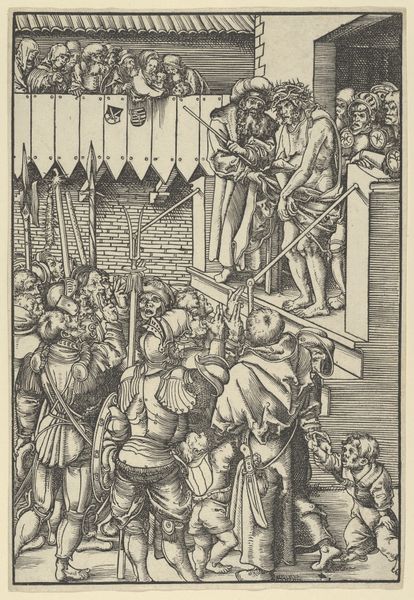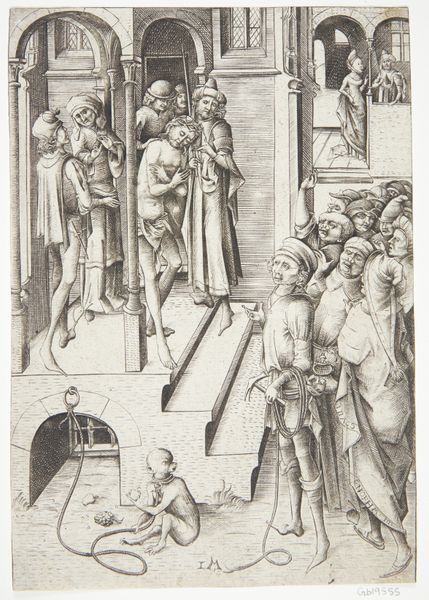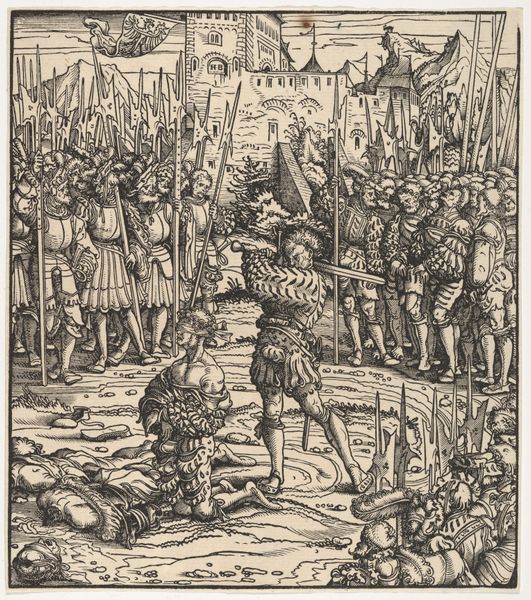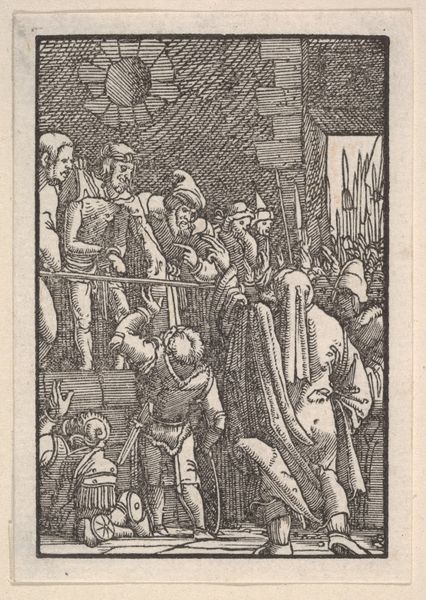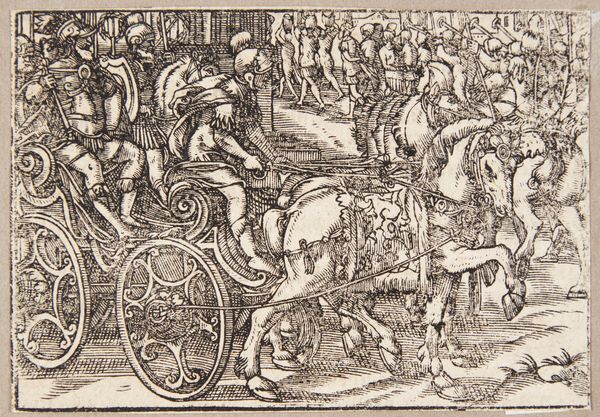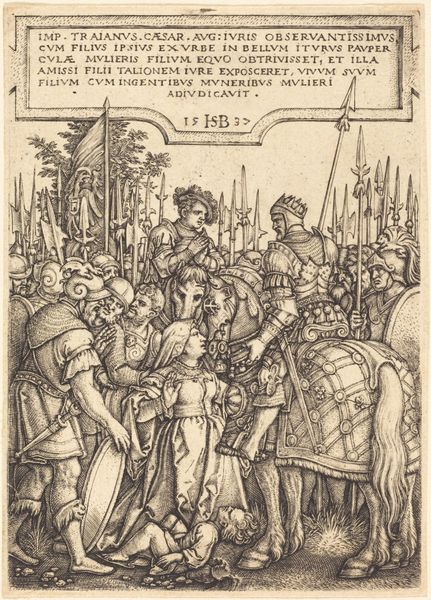
panel, tempera, painting
#
medieval
#
panel
#
narrative-art
#
tempera
#
painting
#
landscape
#
holy-places
#
figuration
#
history-painting
#
international-gothic
#
mixed media
#
miniature
Copyright: Public domain
Curator: Let's examine "Charity of St. Martin," a tempera on panel, created around 1460 by Jean Fouquet. It resides now in the Louvre in Paris. Editor: It's immediately striking how much the landscape dominates—a very northern European sensibility. Usually, in similar narrative scenes, the holy figure would dwarf everything else. There is something very poignant here, the rider in shining armour is less central than in other representations of the theme. Curator: Indeed. This panel reveals much about Fouquet's own socio-political context. As court painter to Charles VII, his work reflects a royal engagement with humanist ideals, emphasizing secular grandeur and civic virtue, rather than purely religious doctrine. The beggar becomes everyman, emphasizing the connection to civic well-being. Editor: Note, though, the persistent use of symbolism despite the apparent "modernity" in its conception. The prominence of St. Martin is undeniable, but so are the layers beneath the surface: observe the lower register featuring the three squares: the left depicts St. Martin in the sleep of the just; in the middle, there is the enflamed heart; finally, we have the Saint freeing a prisoner, while these were motifs employed across the Christian tradition at the time, it has a power of representation in terms of popular imagination and narrative of history Curator: Exactly, the figures and composition were influenced by Italian Renaissance art while incorporating specific details from French history and landscape, reflecting a growing sense of national identity within the French court. These visual narratives further cement Fouquet's crucial role as a conduit between evolving artistic sensibilities and the desire to legitimize national and royal image. Editor: This artwork speaks volumes about its era through its iconic presentation and the carefully constructed world it invites us to consider. We might not know much about life back then, but we have symbols, references that help decode it like messages in a bottle. Curator: Absolutely. “Charity of St. Martin” exemplifies how a narrative, even with well-established iconography, can be leveraged to project certain political values and a carefully considered vision of society, especially regarding justice and benevolence.
Comments
No comments
Be the first to comment and join the conversation on the ultimate creative platform.
